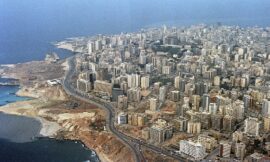The journey from Datong to Beijing spans a distance of approximately 350 kilometers and takes travelers from the historical and cultural richness of Datong to the bustling capital city of China. As the landscape transitions from the ancient monuments of Datong to the modernity of Beijing, the journey offers a diverse tapestry of experiences, seamlessly weaving together the threads of China’s past and present.
Leaving Datong, travelers venture southward, traversing the vast plains of the North China Plain. The road journey provides an opportunity to witness the changing scenery, from the rural landscapes surrounding Datong to the expansive agricultural fields that characterize the North China Plain. This region has been the cradle of Chinese civilization for millennia, and its fertile soils have sustained agriculture and settlements throughout history.
As the journey progresses, the urban sprawl of Beijing gradually comes into view. The contrast between the ancient treasures of Datong and the contemporary metropolis of Beijing is striking. Beijing, the capital of China, is a dynamic city that serves as the political, cultural, and economic heart of the nation. Its historical significance is embedded in the ancient structures, imperial palaces, and cultural landmarks that define the cityscape.
One of the most iconic landmarks welcoming travelers to Beijing is the magnificent Forbidden City, a UNESCO World Heritage site. Once the imperial palace during the Ming and Qing dynasties, the Forbidden City is a sprawling complex of grand halls, pavilions, and courtyards. The imperial architecture, intricate decorations, and the sheer scale of the Forbidden City immerse visitors in the imperial history of China, offering a glimpse into the opulent lifestyle of emperors.
The journey from Datong to Beijing also unveils the marvels of the Great Wall of China, an ancient defensive structure that winds its way through the mountains and valleys of northern China. The Great Wall, with its watchtowers and battlements, stands as a symbol of China’s historical resilience and determination. Mutianyu and Badaling are popular sections of the Great Wall near Beijing, attracting visitors with their well-preserved fortifications and panoramic views of the surrounding landscapes.
Beijing’s modernity is exemplified by its towering skyscrapers, expansive shopping districts, and vibrant cultural scene. The city is home to the contemporary marvel of the Bird’s Nest stadium, an architectural masterpiece built for the 2008 Summer Olympics. The juxtaposition of modern structures against the backdrop of ancient landmarks creates a dynamic urban environment that reflects China’s rapid economic development and its commitment to preserving its cultural heritage.
The ancient hutongs, narrow alleyways lined with traditional courtyard residences, provide a charming contrast to Beijing’s modern skyline. Exploring these historic neighborhoods offers a glimpse into the everyday life of local residents and a sense of the city’s rich cultural heritage.
Beijing’s cultural treasures extend beyond its imperial past, encompassing world-class museums, art galleries, and theaters. The National Museum of China, the Palace Museum, and the 798 Art District are just a few examples of the city’s vibrant cultural scene, showcasing a blend of traditional and contemporary artistic expressions.
In conclusion, the journey from Datong to Beijing is a voyage through time and space, unveiling the multifaceted layers of China’s history and development. From the ancient monuments of Datong to the imperial grandeur of Beijing, travelers are immersed in a narrative that spans centuries. Beijing, with its fusion of ancient wonders and modern vibrancy, stands as a testament to China’s ability to harmonize its rich heritage with the dynamism of the present day.



